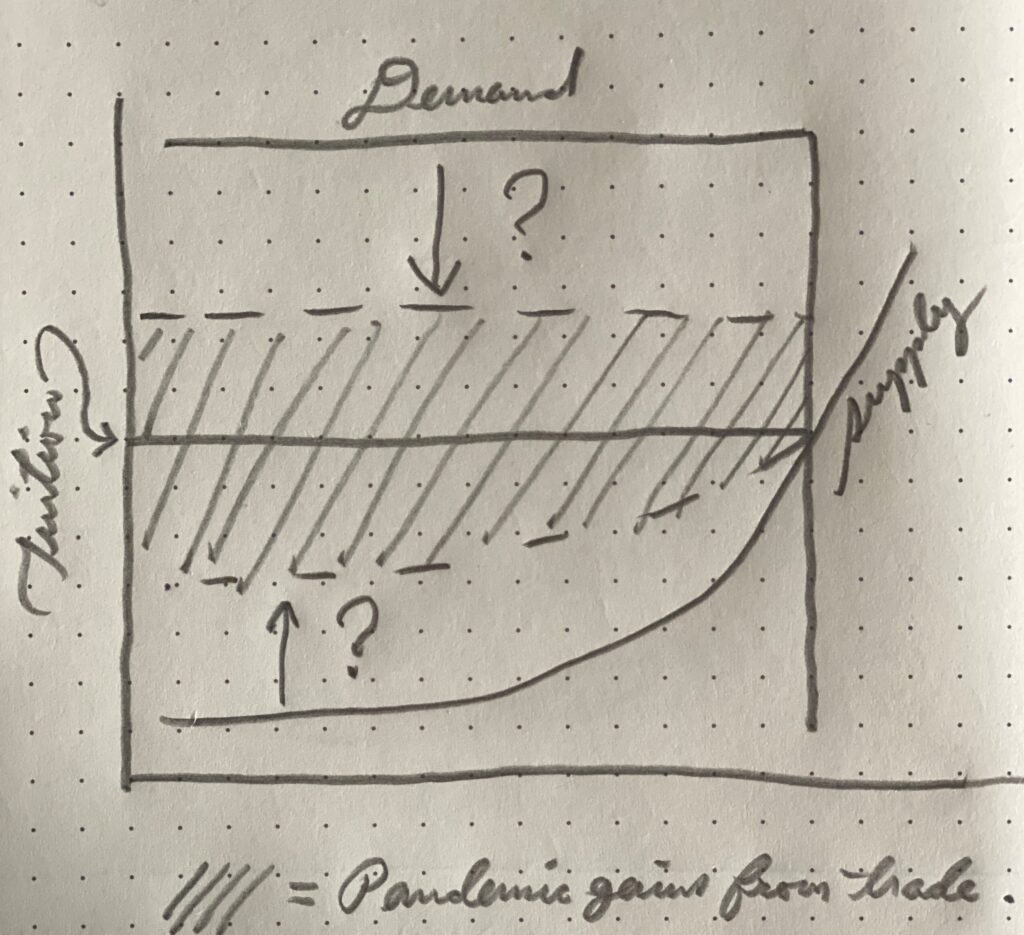Students forced to learn online are demanding tuition reductions. That is a sign that we still believe that there is such a thing as a just price.
The argument for discounts seems to be that the value of the educational product is less when delivered online, so the price should fall. The implication is that product quality, not market forces, ought to determine price.
Economics rejected just price theory when the world rejected God back at the end of the 19th century. In economics, disillusionment was expressed in the realization that price is determined by supply and demand, not value. Think of a diamond whatever you will. But if supply increases, price will fall. And if demand increases, price will rise. Like everything in a world without God, price is relative.
So the economic question posed by the switch to online education is: what’s become of the supply and demand for education in the pandemic?
As an armchair matter, the answer would seem to be: not much.
While some students might choose to forgo school because they believe the quality of online education to be poor, the poor job market suggests that many others will be choosing to return to school. And even if one grants that online teaching is poor in quality, it is more accessible, allowing students who might not have gone to school due to geographic or temporal constraints now to do so. So demand is likely unchanged.
And supply is likely unchanged as well. The poor economy may shutter some schools that were dependent on sports or housing revenues. But the online format allows others to enroll more students from distant markets.
Which suggests that price–tuition–is unlikely to be driven upward or downward by market forces, at least at the industry level.
One complicating factor is competition. The online format could potentially give students more options. It is easier to transfer from a school in California to a school in New York when all that is required is to click on a different Zoom link.
Competition tends to drive prices down. But less so in markets in which the product is highly differentiated. And product differentiation is a huge factor in education, only in education it’s called “reputation.” Students identify with an institution based on legacy status, geographic or sports affiliation, prestige, career networks, and so on, weakening their sensitivity to price in making enrollment choices. The availability of cheap financing (student loans at historically-low interest rates) further reduces the sensitivity to price.
So while competition may put some downward pressure on prices, I wonder if the effect will be large. Schools will likely be able to continue to charge the same tuition rates, despite moving online, because so few students will bail out in response that profits will remain higher than they would be were schools to discount. Indeed, the fact that students are complaining, rather than voting with their feet, suggests that the absence of discounting is not really a dealbreaker for students. It’s more a matter of justice.
But the story does not need to end with market forces. Anger creates social pressure, and that pressure is real.
Although we don’t believe anymore that there is an objectively-verifiable just price, we can still moralize about prices, using the language of progressive law and economics. We can think of the bargaining that takes place between schools and students over tuition as representing a struggle to determine how the two groups share the gains generated by education. To the extent that online education reduces quality, those gains have shrunk. (They have not shrunk at the margin, which is why price is not likely to change much. But they have shrunk inframarginally, reducing the size of the pie.)
In demanding a discount, students are arguing that their share of the gains ought to remain constant. That is, they are arguing that it is not fair to ask them to bear all of the losses associated with constraints placed on the quality of education by the global pandemic, even if market forces dictate that they should.
Schools may reply that their costs have gone up, perhaps because state funding has shrunk, and so they too are suffering losses, leaving students’ share of the gains roughly constant, and therefore just.
So the situation might look something like this:

A.O. Hirschman argued long ago that voice is as powerful a bargaining tool as is exit. Let’s see if that turns out to be true here.